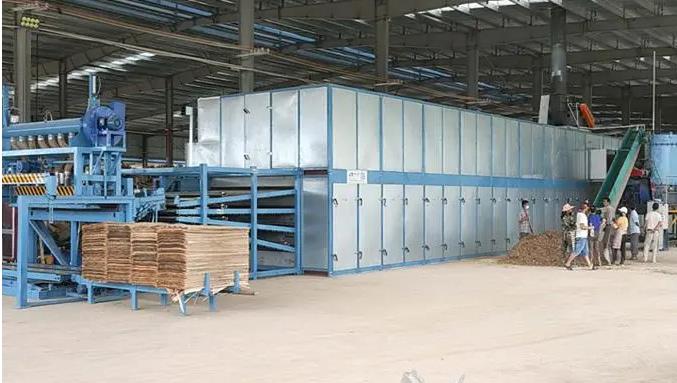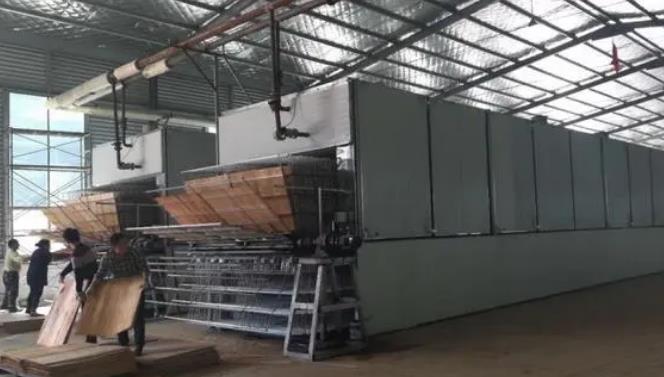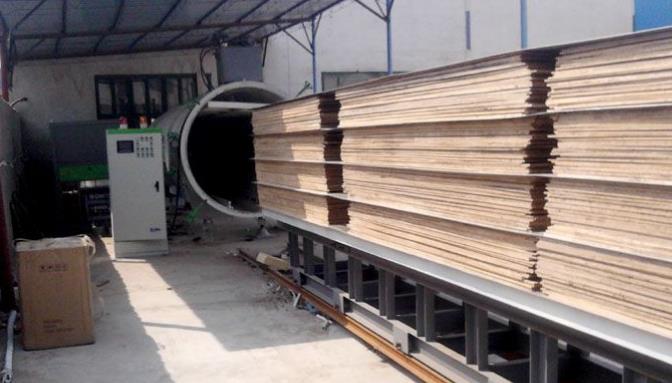contacts:Mr. xiong
phone:18665576061
Tel:18665576061
Add:No.35 huangcun Rd,Tianhe District,Guangzhou china
The veneer after peeling has a high moisture content and can be directly dyed before drying. However, if the raw materials of the veneer are to be stored for use during the
off-season of harvesting, drying treatment needs to be carried out after peeling to facilitate storage and prevent mold and decay.Using urea formaldehyde resin adhesiveWhen
producing technology wood, there are strict requirements for the moisture content of the glued veneer. Except for the moisture content at any point of each veneer that should be
controlled within the range of process requirements, the moisture content difference of the same technology wood veneer should not be too large, otherwise it may lead to the
infiltration of glue in various parts of the veneerThe difference in stress generated during curing affects the bonding strength. At present, the production of technology wood
mainly uses modified urea formaldehyde resin adhesive, which requires the content of veneer to be controlled between 8% and 12% before gluing, and should be stored in a dry and
ventilated place.

There are two methods for drying wood veneer: natural drying and manual drying. The natural drying speed is slow, greatly affected by climate, uneven drying, and difficult to
control moisture content. Continuous production enterprises use dryers for manual drying. The veneer dryer is a continuous veneer drying deviceemptyAir convection: Heat is
transferred to the veneer by circulating hot air.Contact type: The hot steel plate directly transfers heat to the veneer when in contact with the veneer.
Combined: There are various forms such as convection contact, infrared convection mixing, and microwave convection mixing.Drying with hot airThe relationship between the
circulation direction inside the dryer and the longitudinal centerline of the dryer can be divided into longitudinal ventilation type and transverse ventilation
type.Longitudinal ventilation type: Hot air circulates along the length direction of the dryer, and the direction of airflow and veneer transportation is called clockwise, while
the direction of airflow and veneer transportation is oppositeIn reverse.

Horizontal ventilation type: Hot air circulates along the width direction of the dryer. The airflow is either parallel to the surface of the veneer or perpendicular to the
surface of the veneer.In a longitudinal ventilation dryer, hot air circulates along the length direction of the dryer. Due to the long circulation route of hot air, the wind
speed decreases along the wayLow speed and uneven wind speed throughout the dryer result in poor drying efficiency. This type of dryer is currently rarely used. In a
horizontally ventilated dryer, there are two types of airflow: parallel to the board surface and vertically sprayed on the surface of the veneer, where the airflow is vertically
sprayed on the surface of the veneerThe effect is the best.
This is because the veneer has a small thickness and a large surface area, which can be quickly dried at high temperatures. A steam radiator is used to heat the air to above 150
℃, and a fan and nozzle are used to quickly and vertically spray the hot air onto the veneer surface. The impact of the jet destroys the critical layer and saturated water
vapor on the veneer surfaceThe layer overcomes the frictional resistance between the airflow and the surface of the veneer, allowing for the rapid entry of heat and the
discharge of moist air, thereby achieving the goal of rapid high-temperature drying of the veneer. Therefore, this type of dryer is currently the most widely used veneer drying
equipment.

By single board transmission method,There are often two types: mesh belt type and roller type. Mesh belt conveyor with upper and lower mesh belts: The upper mesh belt is used
for pressing to prevent deformation of the veneer during drying; The lower mesh belt is mainly used for support and transportation.The roller type uses pairs of upper and lower
rollers, which rely on the rotation and friction of the rollers to drive the veneer forward. Due to the fact that the distance between the front and rear rollers cannot be too
small, this conveying method is not suitable for conveying single boards with a thickness of less than 0.5mm.
Due to the high compression force of the roller conveyor, the flatness of the dried veneerBetter than the mesh belt type.At present, a new type of veneer dryer, namely composite
veneer dryer, has emerged, with the structure shown in the figure. This type of veneer dryer has a mesh belt drying system on the upper layer and a roller drying system on the
middle and lower layers. It has low investment and small footprint, and can simultaneously meet the needs of veneer drying with different thicknessesRequirements.